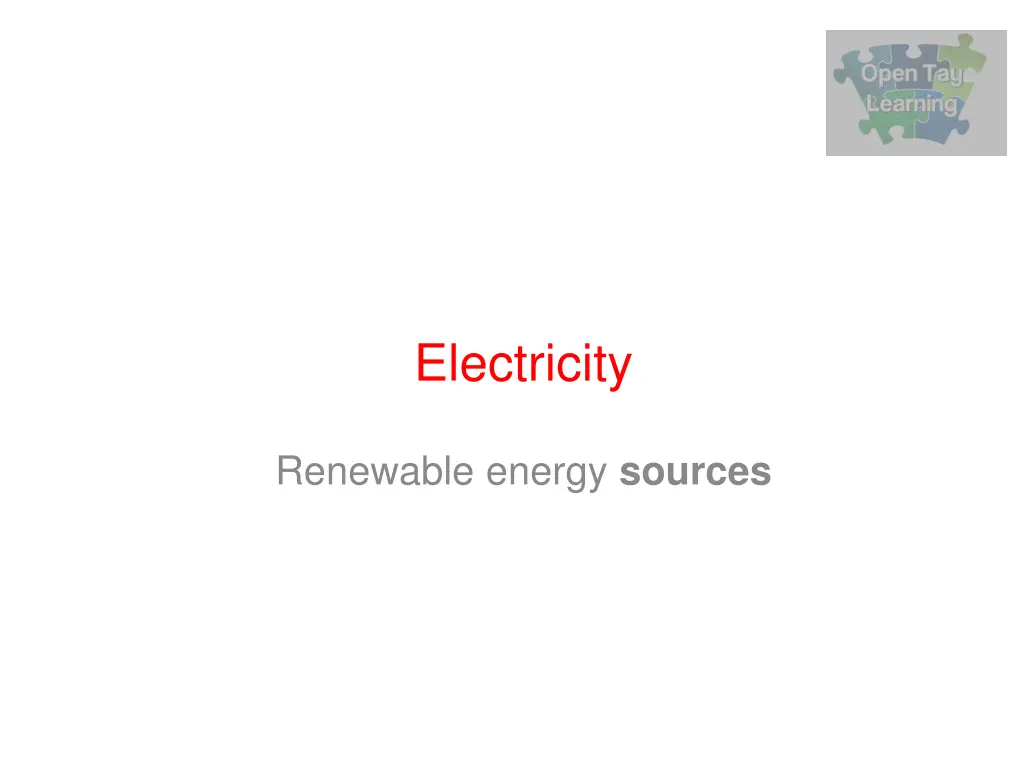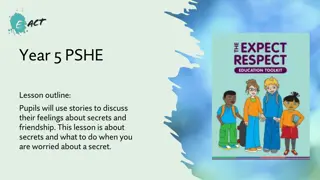
Understanding Renewable Energy: Sources, Generation, and Benefits
Explore the concept of renewable energy, its advantages, and how it is generated through wind, water, and solar power. Learn about the difference between renewable and non-renewable energy sources and their impact on the environment. Discover the sustainable nature of renewable energy and its crucial role in the future of energy production.
Uploaded on | 3 Views
Download Presentation

Please find below an Image/Link to download the presentation.
The content on the website is provided AS IS for your information and personal use only. It may not be sold, licensed, or shared on other websites without obtaining consent from the author. If you encounter any issues during the download, it is possible that the publisher has removed the file from their server.
You are allowed to download the files provided on this website for personal or commercial use, subject to the condition that they are used lawfully. All files are the property of their respective owners.
The content on the website is provided AS IS for your information and personal use only. It may not be sold, licensed, or shared on other websites without obtaining consent from the author.
E N D
Presentation Transcript
Electricity Renewable energy sources
Learning objectives I can describe what renewable energy means I can list some advantages and disadvantages for a range of energy sources
What is energy? Discuss Energy is required to perform any kind of work. Moving machines, heating an oven, breathing and even thinking are just a few of the things that require energy. Sources of energy exist all around us.
Warm-up Do you use electricity at home? How do you know it s in your home, if you can t see it?
Electricity comes into our homes through power cables. We can t see it. But we are able to use it by plugging in things like our PlayStations, TVs and kettles to power sockets in the walls.
Where do we get our power from? In pairs, think about different kinds of energy used to produce electricity. Make a list or draw a picture.
How is electricity generated? Wind Electricity Solar Water
Renewable Solar Wind This Photo by Unknown Author is licensed under CC BY-SA-NC Water
Renewable energy Renewable energy resources will never run out. They can be replaced and are a natural source of energy.
What do renewable and non-renewable mean? Energy resources can be classified into two groups. Renewable Non-renewable Renewable energy resources can be replaced or regenerated and will never run out (at least not for a very long time). Examples: wind and solar. Non-renewable energy resources will eventually run out once used they cannot be used again. Examples: coal and oil.
Electricity RENEWABLE SOURCES 1. Wind 2. Water 3. Solar (from Sun) They will never run out. They do much less damage to the environment. They don t provide much energy and can be unreliable if they depend on the weather.
Wind Energy energy from the wind Using wind turbines, we can turn the kinetic energy of the wind into electrical energywhich we can use in our homes. This is wind energy . + Renewable + No pollution, because nothing gets burned + Turbines are quite cheap and easy to build, so they can be used even in poor countries Turbines can be ugly and noisy Only works if it s quite windy! If the wind stops, you get no energy.
Wind Power Advantages: no pollution. Energy is free, and running costs are almost nil. Disadvantages: can be considered an eyesore, and there is some noise pollution. No power is produced when the wind drops. Wind turbines are put up in exposed places, such as hilltops and around the coast. Each wind turbine has its own generator, so electricity is generated directly.
Large windmills are called wind turbines When the wind blows, the blades move, this spins a turbine which is connected to a generator which generates electricity. Wind farms are made up of lots of wind turbines this allows lots of electricity to be generated Wind farms are built in windy areas No wind = no electricity
Solar Energy energy from the Sun The Earth gets heat and light energy from the sun all the time. Can we use it? Yes, we can! The Sun s energy can either be: 1. changed into electrical energy to use in homes, using solar cells; 2. or used to heat water for homes, using solar panels. + Renewable + No pollution, because nothing gets burned Solar cells and solar panels are expensive Only works if it s sunny!
Solar cells Advantages: no pollution, a very reliable source in sunny countries. Energy is free, and running costs are almost nil. Disadvantages: initially very expensive, and a developing technology. Only produce electricity in daytime. Solar cells generate electricity directly from sunlight. Solar cells are usually used to provide electricity on a relatively small scale, such as for individual houses. Solar cell farms are being developed, but connecting to the National Grid can be expensive.
Solar panels Advantages: no pollution, a very reliable source in sunny countries. Energy is free, and running costs are almost nil. Disadvantages: Only heats water in daytime. Not used to produce electricity. Solar panels use the Sun s thermal radiation to warm up water for the house. A blackened layer behind the pipes helps the absorption of the radiant energy and the warming of the water flowing through the pipes.
Hydroelectric Energy (water) energy from rivers The water flowing in a river has movement (kinetic energy). We can turn this into electrical energy to use in our homes. We usually need to build a dam, and let the water flow through it gradually. This Photo by Unknown Author is licensed under CC BY-SA-NC + Renewable + No pollution, because nothing gets burned + We can store the water up high, and then whenever we need the energy we can let the water out Costs a lot of money to build a dam The dam can ruin the local environment, because it changes where the water naturally flows. Some animals and plants may die.






















